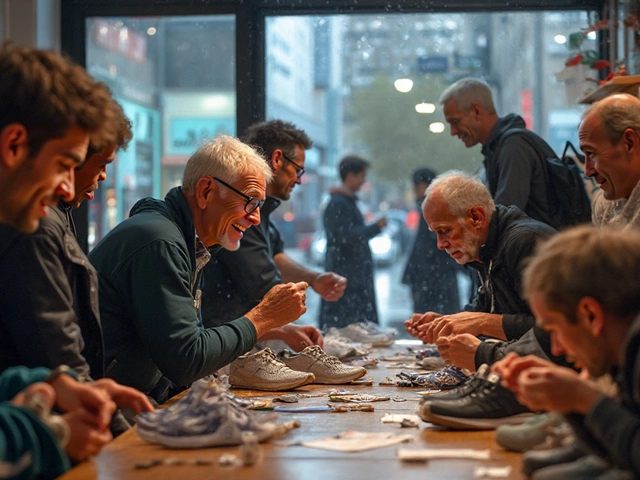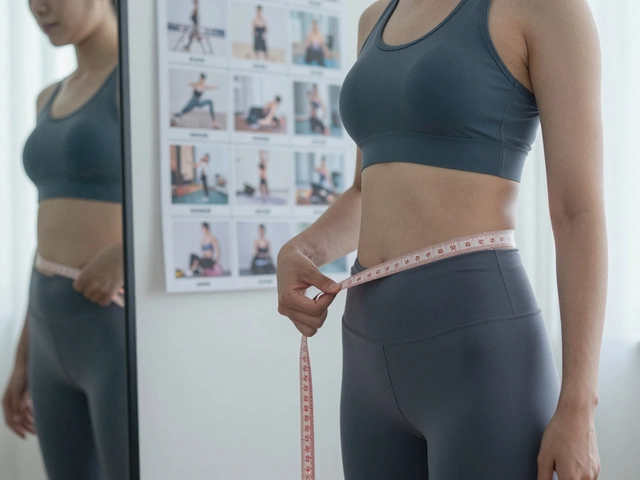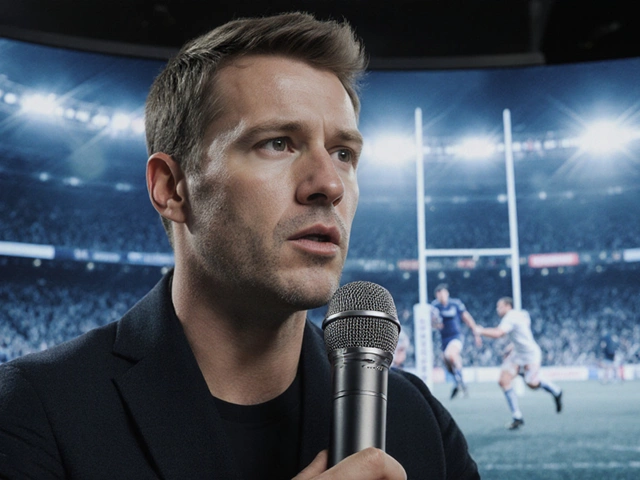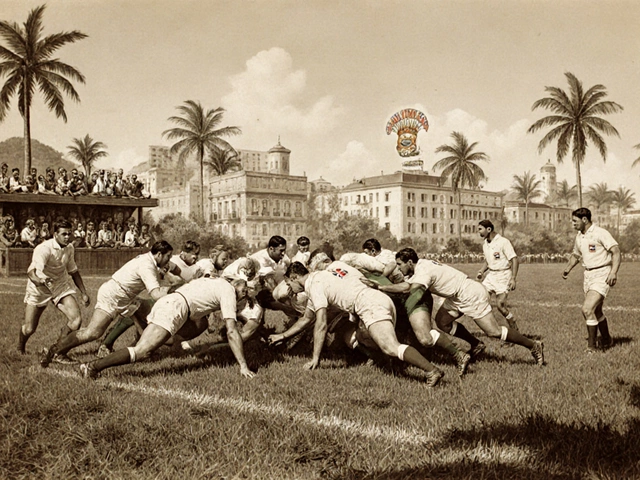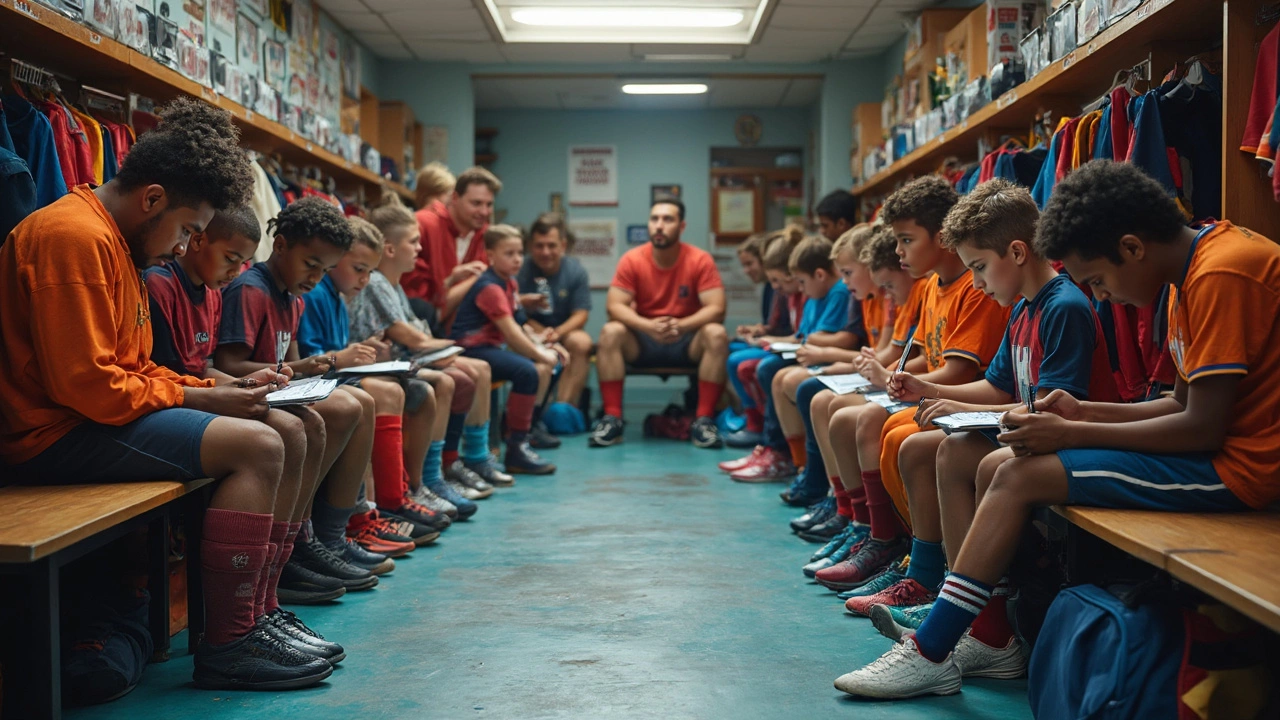
Sports Equipment May 18, 2025
Equipment List Basics: What Really Matters in Sports Gear?
Ever showed up to a game and realized you left something important at home? That's what an equipment list is meant to prevent. Whether you're playing soccer, hockey, or tennis, these lists aren't just there to annoy you or kill your vibe—they're lifesavers.
Think of an equipment list as your game plan before you step onto the field. It covers the must-haves, like your team jersey and shoes, but also those forgotten things—mouthguards, water bottles, or that lucky sweatband you swear by. Missing just one item can mess with your whole performance or even keep you out of the game.
Even pros use equipment checklists before training and matches. One NBA player once forgot his basketball shoes for an actual league game. Doesn't matter how good you are; skipping this simple step can trip up anyone. So, using (and updating) your equipment list means you stay focused on the sport, not scrambling for missing gear.
- Why Equipment Lists Exist
- The Non-Negotiables: Core Gear Every Athlete Needs
- Safety First: Protective Equipment Explained
- Game Changers: Extras That Give You an Edge
- Money-Saving Tips for Building Your List
- Mistakes People Make (and How to Avoid Them)
Why Equipment Lists Exist
If you’ve ever joined a new sports team, you’ve likely been handed a long equipment list and wondered who decides what goes on it. These lists aren’t just a coach’s way of making parents spend money. They’re based on years of learning—sometimes the hard way—that missing just one thing can turn a day upside down.
Sporting bodies and leagues actually review incident reports every season. For example, the National Federation of State High School Associations in the US updates its suggested gear checklists every year because of gear-related injuries or problems during games. Equipment lists help stop three big headaches: injury, performance issues, and last-minute scrambling.
Here’s what these lists aim to prevent:
- Injuries from missing or wrong safety gear (think shin guards in soccer or helmets in baseball)
- Embarrassment or penalties for not having required attire (like showing up with the wrong color jersey)
- Wasted time running home (or to the store) for stuff you forgot
Some teams even print out and laminate their lists, making sure they’re checked before every game or tournament. The idea is to create a quick habit loop: check the equipment list, pack your bag right, and avoid surprises. According to a survey done by the Youth Sports Safety Alliance in 2024, teams with a written equipment list reported 42% fewer gear-related problems on game days compared to teams that didn't bother.
| Issue | % Teams Without List Affected | % Teams With List Affected |
|---|---|---|
| Forgotten Safety Gear | 31% | 12% |
| Wrong Uniforms | 22% | 8% |
| Last-Minute Shopping | 27% | 10% |
Bottom line: Equipment lists save time, money, and sometimes your teeth. They keep everyone prepared, safe, and focused on playing—not fixing gear problems at the last minute.
The Non-Negotiables: Core Gear Every Athlete Needs
Some things just aren't up for debate. No matter the sport, there are always basics you can't skip if you want to actually play or practice. Forget fancy gadgets for a second—it all starts with the essentials. If you miss just one of these, all those drills and practice hours can go down the drain.
Let’s break down what should top every athlete’s equipment list:
- Sports gear specific to your game: This means the main item that gets the job done. For soccer, that’s a quality ball. Baseball? Your glove and bat. No way around it.
- Uniform or clothes that fit: Baggy shorts or a tight shirt will seriously mess with your performance. Schools and leagues usually have rules for what counts.
- Correct footwear: You can’t run track in basketball shoes or play football in flip-flops. Shoes made for your sport help prevent injuries and boost your game.
- Water bottle: Doesn’t matter if you’re five or a pro, staying hydrated is non-negotiable.
- Bag for hauling stuff: Dragging your gear in a plastic bag is a rookie move. Get a decent backpack or duffel with enough space for all your main items and the extras (like tape or snacks).
Here’s a quick look at common core gear across popular team sports:
| Sport | Core Gear |
|---|---|
| Soccer | Ball, cleats, shin guards, uniform |
| Basketball | Shoes, ball, jersey, shorts |
| Baseball | Glove, bat, helmet, cleats |
| Football | Cleats, helmet, pads, mouthguard |
| Hockey | Stick, skates, helmet, pads |
One survey from a national youth sports group found 92% of equipment issues at games were just someone forgetting a piece of core gear, like their shoes or helmet. So, double-check your list every time you pack. Don’t get too creative until you’ve nailed the basics. Your future self will thank you, especially when everyone else is scrambling for last-minute fixes.
Safety First: Protective Equipment Explained
If there’s one part of your equipment list you don’t want to mess up, it’s protective gear. Injuries are no joke. A well-fitted helmet, a quality mouthguard, and proper pads can be the line between walking off the field or visiting the ER. In 2023, the American Academy of Pediatrics reported that proper use of sports safety gear cut injury rates by almost 50% for youth football and hockey players. That’s a big deal.
So what do you really need? Here’s a quick breakdown for some of the most popular sports:
- Football: Helmet, mouthguard, shoulder pads, hip and thigh pads, cleats, and a cup for the guys.
- Hockey: Helmet with face shield, mouthguard, padded gloves, shin guards, elbow pads, neck guard, and a chest protector.
- Soccer: Shin guards are a must. For goalies: gloves and sometimes padded shorts.
- Baseball/Softball: Helmet (especially at bat), catcher’s gear, and sliding shorts.
- Biking: Certified helmet, knee and elbow pads for kids or trail riders.
Here’s a quick look at how common injuries stack up—and what gear helps prevent them:
| Sport | Most Common Injury | Key Protective Gear |
|---|---|---|
| Football | Concussion | Helmet |
| Soccer | Shin fractures | Shin guards |
| Hockey | Facial injuries | Full-face helmet |
| Baseball | Dental injuries | Mouthguard, helmet |
| Biking | Head trauma | Helmet |
Here’s a tip: Don’t just focus on the expensive brands. Protection is about fit and condition. A cheap helmet that fits your head well works better than a pricey one that slides around. Always check for cracks, loose straps, or worn-out padding before every game or ride. If your sport changes seasonally, give your gear a once-over in between—stuff breaks in storage more than you’d expect.
Bottom line? Skipping protective equipment isn’t worth the risk. Every athlete, from weekend warriors to future pros, needs to treat this gear like it’s as essential as the ball or bat itself.
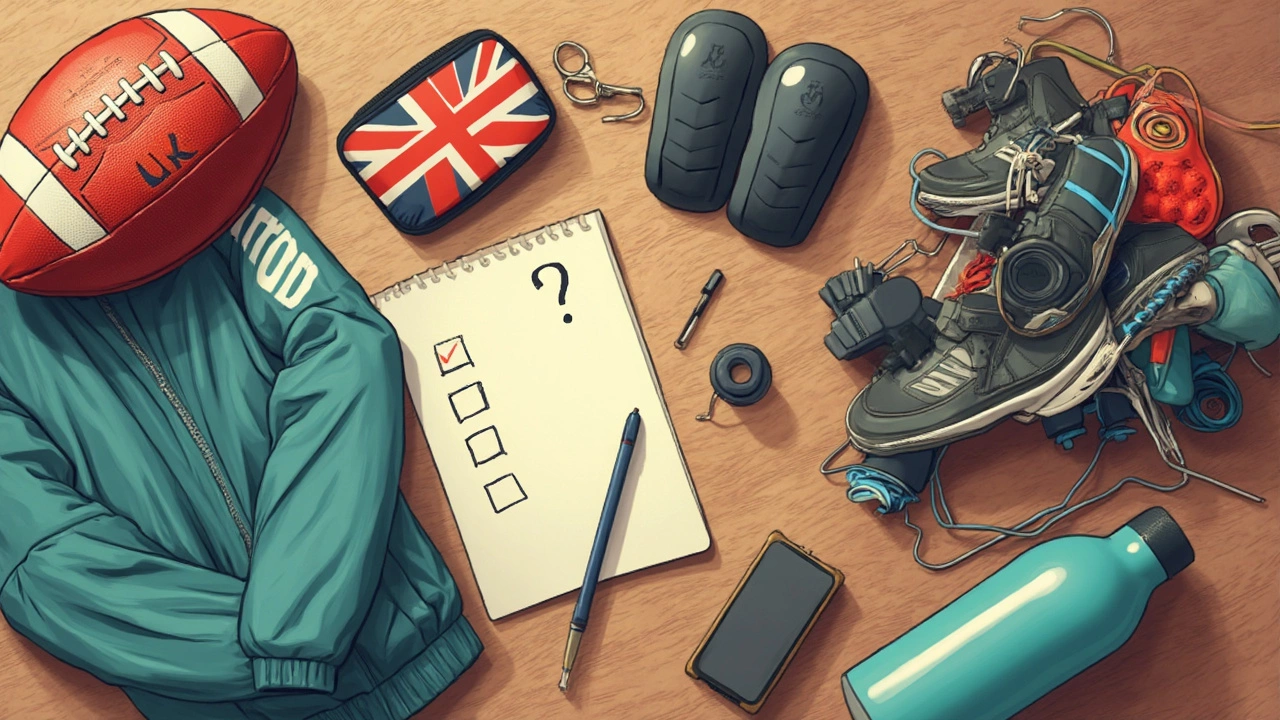
Game Changers: Extras That Give You an Edge
Some gear sits on every must-have list, but the stuff that really gives you an edge is everything that goes beyond the basics. Small upgrades and clever extras can help you play better, recover faster, or just make game day less stressful.
Let’s talk about grip. In sports like tennis or baseball, grip tape or gloves can completely change how you handle your gear. Professional baseball players swap out bat grip tape every few games, not just for looks, but because better grip means more control and less chance of dropping the bat. Even moisture-wicking socks count—slipping inside your shoes is no joke when you’re sprinting.
Hydration isn’t just about bringing a bottle of water. A lot of teams swear by electrolyte tablets or sports drinks, especially for summer games and tournaments. These keep you firing at full power for longer, and there’s real science backing that up: dehydration drops reaction times and weakens muscles fast, often before you even notice.
Let’s not forget recovery. Foam rollers, massage balls, and portable ice packs can help keep you in top shape after tough games. NBA and soccer players have made foam rolling a normal part of their cooldown to boost flexibility and cut down on injuries. Even if you’re just playing for fun, these extras can stop small problems from turning into something bigger.
Some extras are all about convenience. Collapsible benches for the sidelines, cooling towels, and even mini first-aid kits make a real difference across a busy season. Ever tried to play through a blister without a bandage? Not fun.
- Grip tape or gloves for better control
- Moisture-wicking socks or athletic insoles
- Electrolyte tablets or energy gels
- Foam roller or massage tools for recovery
- Personal cooling fans or towels
- Compact first-aid supplies
- Collapsible chairs or benches for breaks
Bottom line: don’t just focus on your jersey and shoes. The right sports gear extras can mean the difference between just getting by and actually having your best day on the field.
Money-Saving Tips for Building Your List
No one wants to empty their wallet for sports gear, but costs can get out of hand fast. It’s not just the obvious big-ticket items like shoes or helmets—those little extras sneak up on you. Building a solid equipment list with smart choices saves a ton over the season.
Start with the basics: See what you already have, what actually fits, and what truly needs replacing. Every season, families spend $200 to $500 per kid on youth sports equipment in the U.S., mostly because of unnecessary repeat purchases. Don’t get trapped searching for new when the old stuff works just fine.
- Ask around—lots of teams run used gear swaps, and you’d be amazed what ends up in the free pile. Good as new, just not shiny anymore.
- Online marketplaces like Facebook Marketplace or Craigslist always have sports gear bargains. Just check for safety—avoid used helmets or anything with cracks.
- Shop off-season if you’re buying new. Sports stores clear out last season’s models with deep discounts, especially on shoes and bats.
- Stick to league-required gear at the start. Add extras later if they actually help your game, not just because they look cool.
Don’t forget about sharing equipment within the family or team—stuff like cones, training bibs, or water jugs. Pooling together saves money and space.
| Item | Brand New | Used/Pre-owned |
|---|---|---|
| Soccer Cleats | $65 | $20 |
| Baseball Glove | $60 | $18 |
| Basketball | $30 | $10 |
| Hockey Helmet | $85 | $35 (check safety standards) |
If you’re buying for growing kids, look for adjustable gear that lasts more than one season—like cleats with extra eyelets or helmets with padding inserts. Returning used gear to local stores for credit is another way to cycle through equipment without burning cash.
Clever planning, trading, and team-up shopping can chop gear expenses way down, so you save for what really counts—maybe even playoff snacks.
Mistakes People Make (and How to Avoid Them)
It’s crazy how many athletes get caught out by simple slip-ups with their equipment list. Some are so common, you’ll probably recognize yourself in them. Let’s break them down and fix them for good.
- Forgetting Essentials: The obvious stuff—cleats, mouthguard, water bottle—gets left behind more than you’d think. Studies done by sports clinics show that around 30% of youth athletes forget at least one key item for practice or games each season.
- Relying on Memory: Trusting your brain instead of a written list is a rookie mistake. Even pro teams have equipment managers with clipboards and checklists. ESPN reported the infamous story where a starting quarterback nearly missed a playoff game after forgetting his pads at home.
- Packing Worn-Out Gear: Old or broken items can ruin your day. According to a survey by Sports Health, outdated gear is linked to 1 in 5 minor injuries in youth leagues.
- Skipping Protective Equipment: Some players ditch shin guards or cups for comfort. Not smart. Emergency rooms say most sports injuries happen when players skip something "annoying" but necessary.
- Last-Minute Checks: Procrastination wrecks your prep. Checking your bag ten minutes before you need to leave almost guarantees you’ll miss something.
If you want to avoid these headaches, follow a simple checklist every time. Here’s a quick look at how mistakes (and fixes) stack up:
| Mistake | Common Result | Best Way to Avoid |
|---|---|---|
| Forgetting items | Missed practice/game, borrowed gear | Use a written equipment list |
| Old or damaged gear | Increased injury risk | Inspect/add replacements regularly |
| Skipping protection | Cuts, bruises, worse injuries | Never leave home without safety items |
"A little prep goes a long way—our athletes perform best when every piece of gear is ready to go," says Jake Owens, head coach at Ridge High School.
It’s not rocket science, but it does take some habit-building. Stick your checklist to your gear bag, use reminders on your phone, or buddy up with a teammate to double check each other. Stay ahead of the game by making this stuff automatic.
